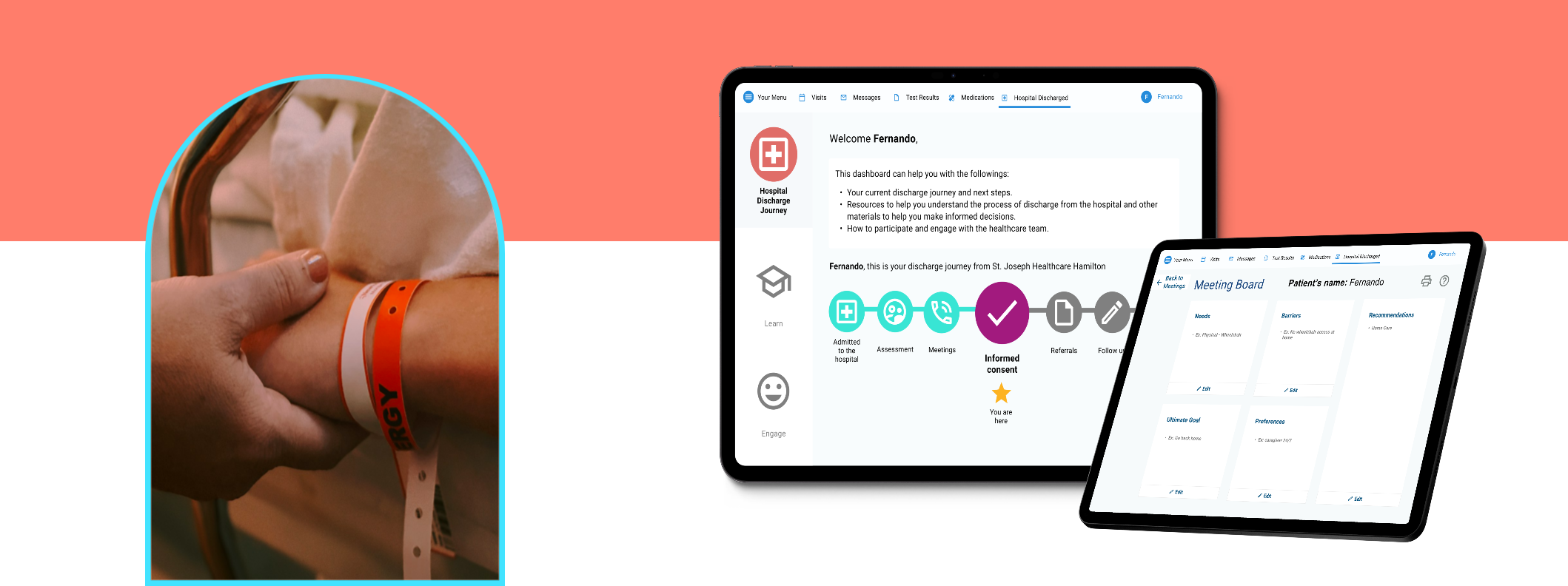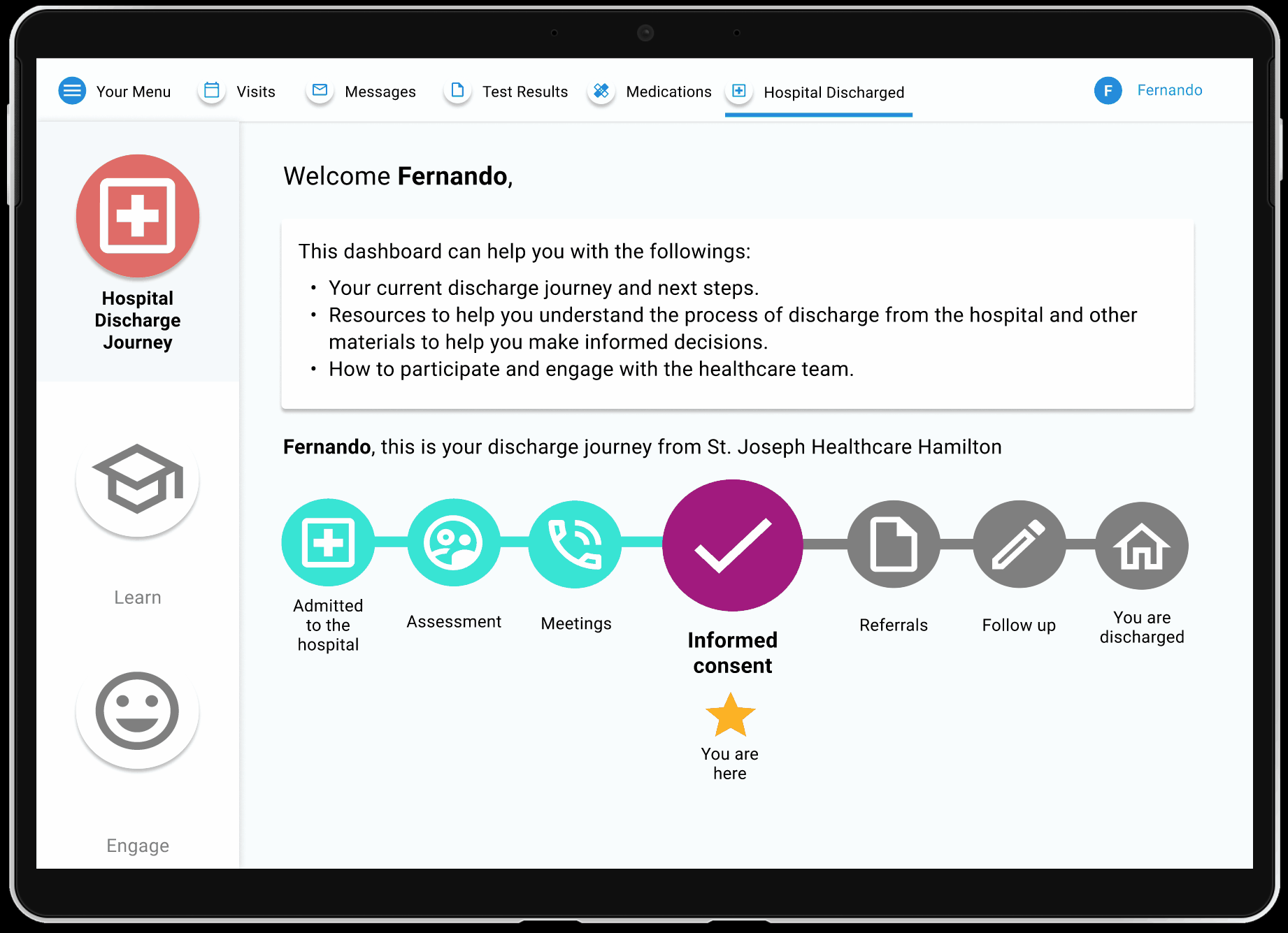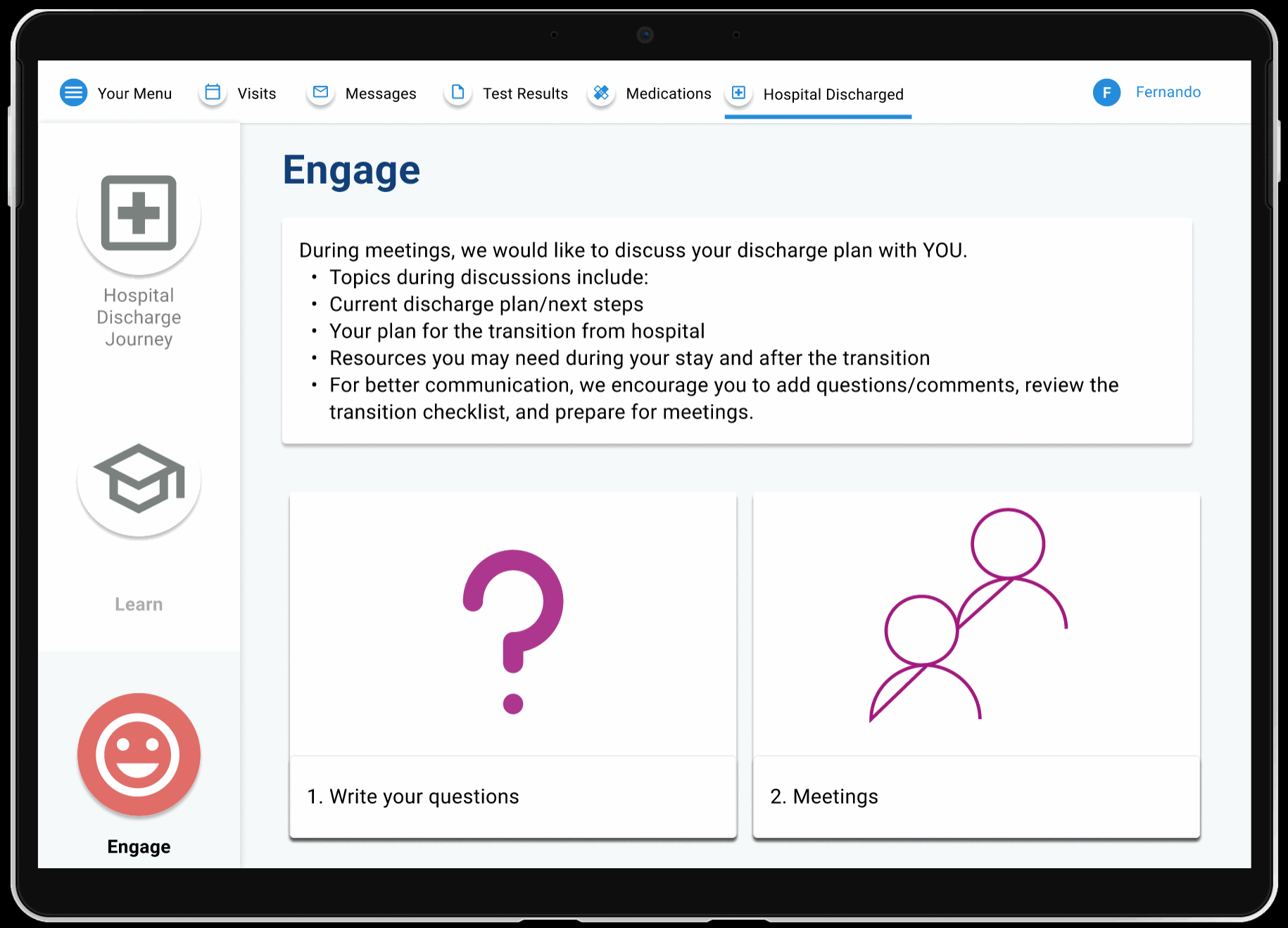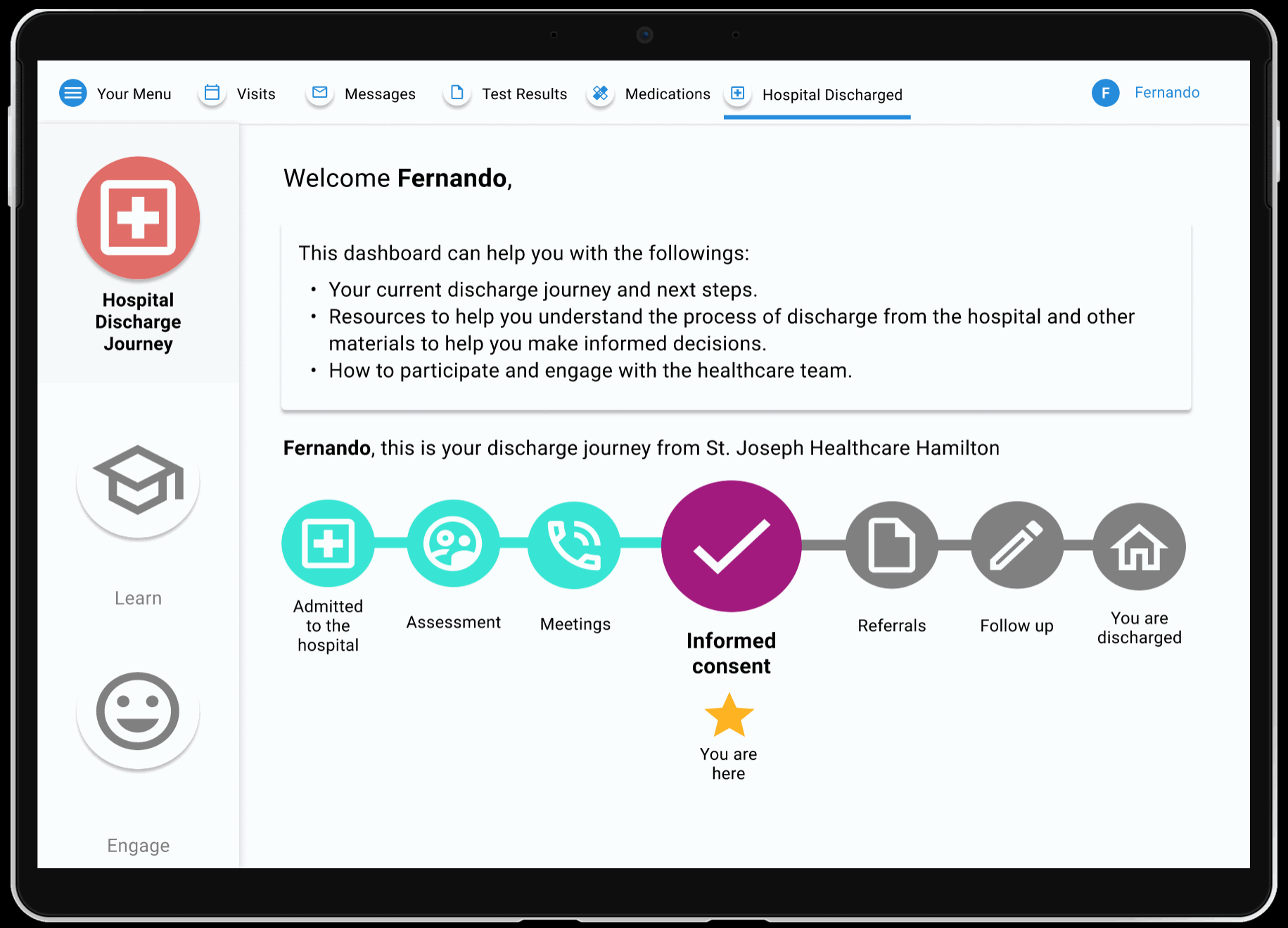Hospital Discharge Journey Tool
A collaborative and interactive tool to help patients, family members, and hospital staff with discharge planning.

Overview
In Canada, a standardized definition of designated Alternate Level of Care (ALC) is given to patients who are medically stable but cannot be discharged. The Canadian Institute for Health Information reports that ALC accounts for up to 14% of Canadian hospital days, utilizing up to 7,500 acute care beds annually.

St. Joseph Healthcare Hamilton Hospital and McMaster University collaborated to work on this project. I had the pleasure of being part of this significant project for almost a year.
Challenge: The challenge was that there was a communication gap between patients, families, and staff was one of the barriers to a smooth hospital discharge journey. The gap affected the patient flow in the hospital and the experience of these patients and family members.
Outcome: The work ended in the creation of a collaborative and interactive prototype to help patients, family members, and hospital staff with discharge planning.
My Role:
UX Researcher
Teammates:
Project Supervisor
UX Researcher
Research Student
Duration:
8 Months
1. Initial Research
We conducted initial research during the discovery phase to gain insights into the basic understanding of the process of the hospital discharge journey, its challenges, and the experience of the patients who are heavily involved in the process and what has been done about it in Canada and other countries around the world.
1.1. Key Findings
- The literature review confirmed our insight about the importance of having a conversation with patients/family members because it provides more time for planning and surprises, but sometimes it is difficult when they are not ready to have the conversation.
- Despite not having access to patients before the interviews, we had found a case from the news about a family of a designated ALC patient discussing the financial impacts and the high fee, and they were not much aware of them due to a lack of communication which confirmed our insights further.
2. User Interviews
After initial research, we dived into primary research, where we conducted 25 in-depth interviews with social workers, hospital discharge coordinators, family members and Patient and Family advisors.
The purpose was to understand who is involved in the patients' hospital journey and gain hidden insights into the experience of patients and their family members.

The following are the direct quotes showing the gap in communication when it comes to hospital discharge.

In this stage, we synthesized the information from interviews and literature review to create order from chaos. Miro tool truly helped with documentation and collaboration.
3. Journey Map
After going through several iterations, I created a comprehensive journey map demonstrating the flow for the care team, patients, and family members. It helped us understand and visualize what steps the members take in the hospital discharge journey, as well as their feelings and thoughts. When we showed it to the senior hospital discharge coordinator, she was impressed with the comprehensive visual view of the complex hospital discharge, which could be useful for future people working on the project.

4. Impact Features
The chosen idea was a collaborative and interactive tool to help with the following:
- Help the Care team start difficult conversations.
- Engage patients and their family members in family meetings.
- Give patients and family members effective information on how the system works.
The following is the summary of our main insights discovered around the communication gap and the potential opportunities that can be addressed.

6. Style Guide for Older Adults
After our first usability test of the first prototype, we noticed that users had difficulty navigating and using the prototype. Therefore, we went back to the prototype phase and reviewed who our users were. Our users are older adults who have different cognitive abilities.
Therefore, it was necessary to change the prototype to introduce each feature and screen gradually instead of all at once. This would help us avoid overlaps of elements on interfaces to clarify their purpose.
7. Final Designs



8. Reflection
- Journaling and documenting observations and brainstorming sessions are important.
- It is important to be aware of unconscious bias in the design, thus it is important to make sure the ideas and prototypes are being tested thoroughly.
- The learning curve significantly increased through rapid prototyping.